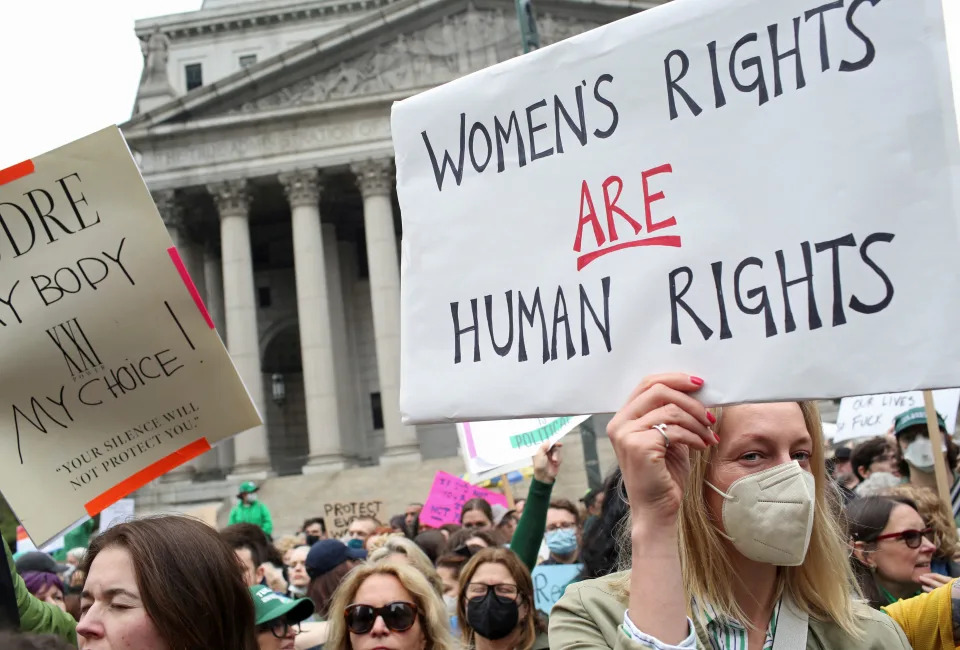The economic cost of abortion bans
Abortion is obviously a fraught moral issue. There are also important economic consequences states ought to consider if the Supreme Court does overturn Roe v. Wade, as expected, and most Republican-led states impose severe abortion restrictions or outright bans.
“Eliminating the right of women to make a decision about when and whether to have children would have very damaging effects on the economy and would set women back decades,” Treasury Secretary Janet Yellen said during a Congressional hearing on May 10. Yellen said the 1973 Roe v. Wade Supreme Court decision, which legalized abortion nationwide, “enabled many women to finish school. That increased their earning potential, it allowed women to plan and balance their families and careers.”
The Supreme Court is due to rule by June on a Mississippi law that would be one of the nation’s most aggressive efforts to restrict abortion, if the high court upholds it. The leak of a draft opinion indicates the court will do just that, overturning Roe and opening the door for at least half of all states to sharply curtail or ban abortion. The political implications could be explosive, but the economic consequences could be substantial, as well.
Yellen, a labor economist by training, is surely aware of numerous studies that have examined the financial impact on women unable to obtain a desired abortion, and on the broader economy. Last September, more than 150 economists filed an amicus brief in the Mississippi case before the Supreme Court, citing the negative impact on women’s educational attainment, earning potential and career success if forced to bear a child they don’t want.
“The financial effects of being denied an abortion,” they wrote, “are thus as large or larger than those of being evicted, losing health insurance, being hospitalized, or being exposed to flooding due to a hurricane.”
Nearly half of women who get an abortion in the United States are already living below the poverty level. If forced to raise a child against their wishes, they’d have to forego work or find child care if they want to work, which can easily cost $10,000 per year. The burden of raising a child explains why young mothers, not surprisingly, are less likely to finish high school or attend college, which directly correlates with lower lifetime incomes. Reluctant mothers are also more likely to receive public assistance.
The 'motherhood wage penalty'
Even for better-off women, there’s a well-known “motherhood wage penalty” that results in lower pay for women who have children, due to time off for childbearing, work-life balancing and other factors. Many women and their partners willingly accept that trade-off as they build their families. But abortion bans would force that penalty on women who don’t want to pay it.
[Follow Rick Newman on Twitter, sign up for his newsletter or send in your thoughts.]
Generous paid family leave would reduce the motherhood penalty somewhat, but the United States is one of the few developed nations with no such program. Some companies offer paid leave, but they tend to be big firms with mostly white-collar workers, not smaller firms staffed with lower-paid workers.
Abortion opponents argue that contraception is now readily available and ought to mitigate the need for many abortions. Yet even that can be expensive for low-income women without health insurance, especially since some contraception requires a doctor’s visit and a prescription. There’s also the uncomfortable reality that some pregnancies are simply mistakes—by both the man and the woman. In that sense, abortion bans would punish women more than men for a mistake each of them makes.
 People protest after the leak of a draft majority opinion written by Justice Samuel Alito, preparing for a majority of the court to overturn the landmark Roe v. Wade abortion rights decision later this year, in New York City, U.S., May 3, 2022.
People protest after the leak of a draft majority opinion written by Justice Samuel Alito, preparing for a majority of the court to overturn the landmark Roe v. Wade abortion rights decision later this year, in New York City, U.S., May 3, 2022. REUTERS/Yana Paskova
The nationwide legalization of abortion in 1973 occurred as women were increasingly joining the workforce. There were factors other than the Roe decision fueling that trend, including more women going to college, changing attitudes about women working and the need for two household incomes. But economists think Roe helped, since more women could put off starting a family to focus on education or a career, if they chose to.
“Roe v. Wade and access to reproductive health care, including abortion, helped lead to increase labor force participation,” Yellen said on May 10.
A move that would exacerbate the labor shortage
There was no labor shortage, as there is now, when the Supreme Court debated Roe in 1973. Many employers these days are desperate for workers, and one factor in the Great Resignation is the departure of women from the labor force, most likely because they’ve had more caregiving responsibilities at home during the COVID pandemic than men. Abortion bans would add one more barrier for some women to overcome if they want to work, and that would harm the overall economy. When employers can’t get all the workers they need, they produce less, demand goes unmet, there are fewer people earning and spending money than there would be otherwise, and the economy underperforms.
If states insistent on banning abortion wanted to mitigate the economic damage, they’d establish stronger support networks for reluctant mothers, and especially low-income ones, that include free or subsidized child care and health care. They’d also find new ways to impose the economic burden as equitably as possible on the fathers of unwanted children, as well as the mothers, to address the bias already working against women in the labor force and make sure men feel the same fear about becoming an accidental parent as women do.
This is unlikely to happen in most states that ban abortion, given that economic concerns are mostly an afterthought in what is mostly a cultural, political and religious battle. We already see this in another controversial issue: Immigration. Economists broadly argue that more legal immigration generates more economic activity, which benefits everybody, because more people working means more people spending and stronger economic growth. Plus, immigrants to the United States are more entrepreneurial than native-born Americans. More legal immigration, in fact, is one glaring solution to the current labor shortage.
Yet xenophobia and the conflation of legal and illegal immigration have made this a potent political weapon for Republicans, who have been able to block efforts to increase immigration or bully Democrats into sidestepping the issue, as President Biden has largely done. Republican Gov. Greg Abbott of Texas recently held up truck commerce from Mexico to the United States as part of a stunt to look for migrants, weapons and drugs sneaking into the country. He didn’t find any, but produce rotted while shipping costs and prices rose, with businesspeople and consumers paying the price for Abbott’s political spectacle. Many Americans are ambivalent about abortion, but they generally oppose burning money.
Rick Newman is the author of four books, including “Rebounders: How Winners Pivot from Setback to Success.” Follow him on Twitter: @rickjnewman.














